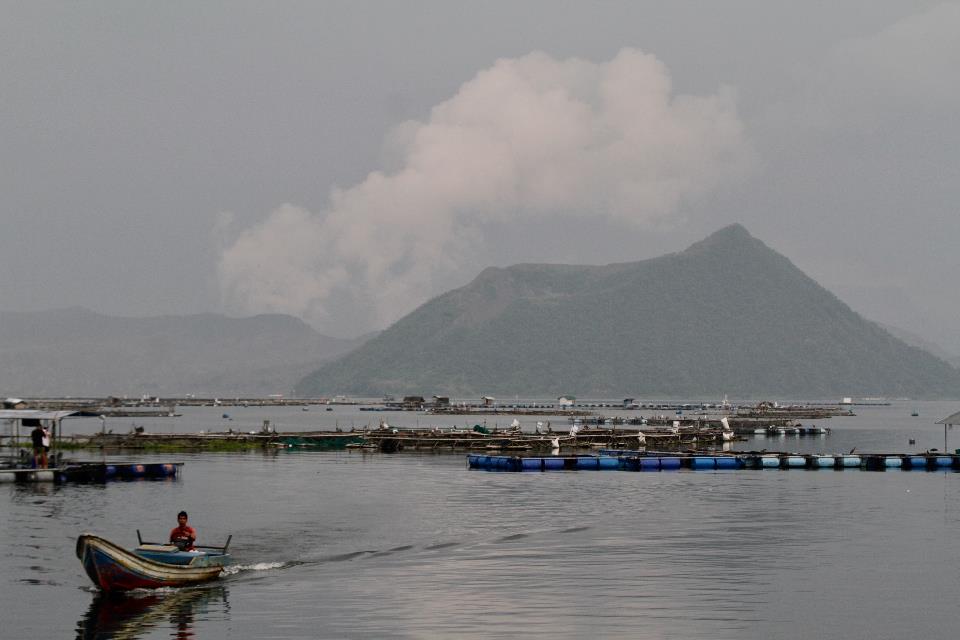
The situation in Taal Volcano remains fluid as the restive volcano may suddenly erupt similar to what happened in January 2020, state volcanologists said on Thursday.
“Right now, based on our parameters, there’s no sign that Taal may erupt like what happened last year,” Rudy Lacson, Senior Science Research Specialist at Phivolcs told the BusinessMirror.
Speaking in Filipino, Lacson added that the short-lived phreatomagmatic bursts on Wednesday were signs of magmatic unrest, similar to the explosion that prompted Phivolcs to place Taal Volcano under Alert Level 3 last July 1.
“Alert Level 3 means there’s magmatic unrest. So what happened is short-lived phreatomagmatic explosion occurred. There’s a possibility, if the activity underneath escalates, of a bigger explosion,” he said.
According to Lacson, Phivolcs “is not discounting the possibility that a similar explosion compared to January 2020 may happen, that’s why we have already recommended the evacuation of several barangays in Agoncillo and Laurel,” he said.
If sudden pressure buildup cracked the surface, Lacson said, the interaction of water flowing in and the magma could lead to a volcanic eruption similar to what happened last year.
All the parameters, from seismic activity underground to degassing, swelling, ground deformation are all being monitored by Phivolcs, he added.
“Under Alert Level 3, explosions may happen,” Lacson said. “But we are not expecting strong volcanic eruptions. Unless pressure buildup happened fast, like what happened last year, the pressure buildup was fast, enough to cause such eruption.”
Paolo Reniva, Senior Science Research Specialist based in Barangay Buko, Talisay, Batangas said another short-lived phreatomagmatic burst happened Thursday morning.
“At exactly 6:47 a.m., another mild explosion occurred. But after that, we have not monitored any other alarming activity in Taal,” he told the BusinessMirror in a telephone interview.
On Wednesday, Phivolcs reported that the Taal Volcano Network recorded a series of five short-lived phreatomagmatic bursts in the morning and one occurring at exactly 9:41 p.m. that produced short-jetted plumes rising up to 700 meters above the Main Crater Lake.
Phivolcs also recorded 60 volcanic earthquakes, including five explosion-type earthquakes, 24 low-frequency volcanic earthquakes and 21 volcanic tremor events having durations of two to four minutes.
High levels of volcanic sulfur dioxide or SO2 gas emissions and steam-rich plumes that rose 1,500 meters was generated from the Taal Main Crater, Phivolcs Taal Volcano Bulletin issued at 8 a.m. on Thursday reported.
In the past 24 hours, Phivolcs said the SO2 emission averaged 11,397 tonnes/day.
“This is relatively high. It only means that the magma is already in the surface so anytime, if the soil cracks open and water flows in, it may lead to volcanic eruption. But right now, the pressure build up is not enough for a big explosion similar to January 2020,” Lacson said.
According to Phivolcs, based on ground deformation parameters from electronic tilt, continuous GPS and InSAR monitoring, Taal Volcano Island has begun deflating in April 2020, while the Taal Region continues to undergo very slow extension since 2020.
At Alert Level 3, magma extruding from the Main Crater could drive explosive eruption, Phivolcs said.
Phivolcs reminded the public that the entire Taal Volcano Island is a Permanent Danger Zone (PDZ), and entry into the island as well as into the high-risk barangays of Agoncillo and Laurel must be prohibited due to the hazards of pyroclastic density currents and volcanic tsunami should strong eruptions occur.
“All activities on Taal Lake should not be allowed at this time. Communities around the Taal Lake shores are advised to remain vigilant, take precautionary measures against possible airborne ash and vog and calmly prepare for possible evacuation should unrest intensify,” Phivolcs stated.
Meanwhile, flying over Taal Volcano Island remains dangerous as airborne ash and ballistic fragments from sudden explosions and pyroclastic density currents, such as base surges, may pose hazards to aircraft, Phivolcs said, advising aviation authorities to prohibit flying activities near the volcano.

